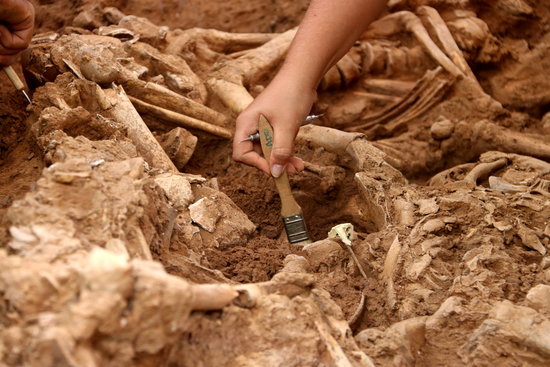360 bodies from 17th century found in Barcelona
Graves discovered by archaeologists at site of future Sagrera high speed train station

Archaeologists working in the area of the future Sagrera train station in Barcelona have discovered 68 graves with 358 buried bodies. They date back to the beginning of the 17th century, coinciding with when the troops of Spanish king Felipe IV had the capital under siege, according to the head of the council’s archaeological service, Josep Pujades.
The archaeologists’ hypothesis, however, is that the deaths would have been caused by plague and not combat. This necropolis was first discovered back in 2011 in the first excavation campaign. 182 bodies were found at the time. Excavation was interrupted, though, when work on the train station was put on hold.
Under siege
Pujades has said that the bodies discovered with the resumption of archaeological work correspond to individuals aged between 15 and 35. Most of them are men. In some cases they were well-placed in the ground, but others were buried in any kind of way, sometimes stacked on top of each other. Using indications from ceramic material, dating the bodies to somewhere from the start to middle of the 17th century. The siege on Barcelona took place from 1713 to 1714 during the so-called Reaper’s War (Guerra dels Segadors, in Catalan.)
“We know that there was a great plague in Barcelona at the same time,” Pujades explained, pointing out that this is the most likely cause of death.
The current excavation campaign began in April, a little after Spain’s Ministry of Infrastructure resumed works at the future high-speed train station. It is being carried out by the company Antequem with municipal supervision.
Out of the graves discovered, only three remain to be excavated, but Pujades believes that the number of bodies “won’t increase too much” as the graves are small.